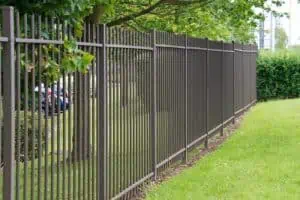How does weather impact the need for fence repair?
Weather is a term used to describe the conditions of the air, including temperature, humidity, precipitation, cloudiness, wind, and atmospheric pressure. It differs from climate, which is the average weather for a particular area over a period of time (typically 30 years).
(Looking for “Cedar Fence Installation“? Contact us today!)

Weather can impact your fence’s maintenance and repair needs by causing damage to your fence, affecting its longevity, or by changing the material of your fence. Understanding the effects of weather on your fence can help you decide whether or not to repair it, replace it, or invest in a new one.
Fences are among the most susceptible to weather damage because they are often positioned outdoors, and exposed to the elements. To make sure that your fence is in top condition, perform routine maintenance and inspections to detect damages before they become too severe.
Winter is an extremely harsh time of year for a fence, especially for those with a wooden fence. Snow, ice, and other cold weather conditions can cause your fence to shift or crack and may even break it.
Snow can also make a wood fence more prone to rot and warping, so it’s important to remove any snow buildup from your fence. If you notice signs of mold, mildew, or rotting boards in your fence, call a professional to have it repaired before the rot spreads.
Rain can be a problem for different kinds of fences, but it’s particularly damaging to wooden fences. Rain softens wood fibers, which can lead to mold and mildew growth, as well as rot, both of which can cause extensive damage.
Metal fences, meanwhile, can be damaged by rust and corrosion as the weather conditions change. If your fence has rusted, it may require a significant amount of repair work to get it back to its original condition.
In addition to rain, ice and snow can also affect the way your fence functions. Snow and ice can melt, allowing water to pool around the fence, causing the fencing to shift or warp. Similarly, salt and road salt can cause corrosion in both wood and metal fencing. If your fence is in an area where road salt will be applied, consider covering it with burlap to reduce the damage.
What’s more, a large storm can take its toll on your fence as the winds and heavy rains can cause holes or cracks in it. Depending on the type of fence and where it is located, these repairs can range in price from minor to major.
Fences are the first line of defense against intruders and pests, so it’s crucial to protect them from the elements. This means removing bushes and tree branches that may fall over or under the fence.
If you have a wood fence, keep the space between the rails and boards clear of debris to allow for proper ventilation. Use a waterproof sealant or stain on the wood and be aware of any signs of wood rot or mold.

